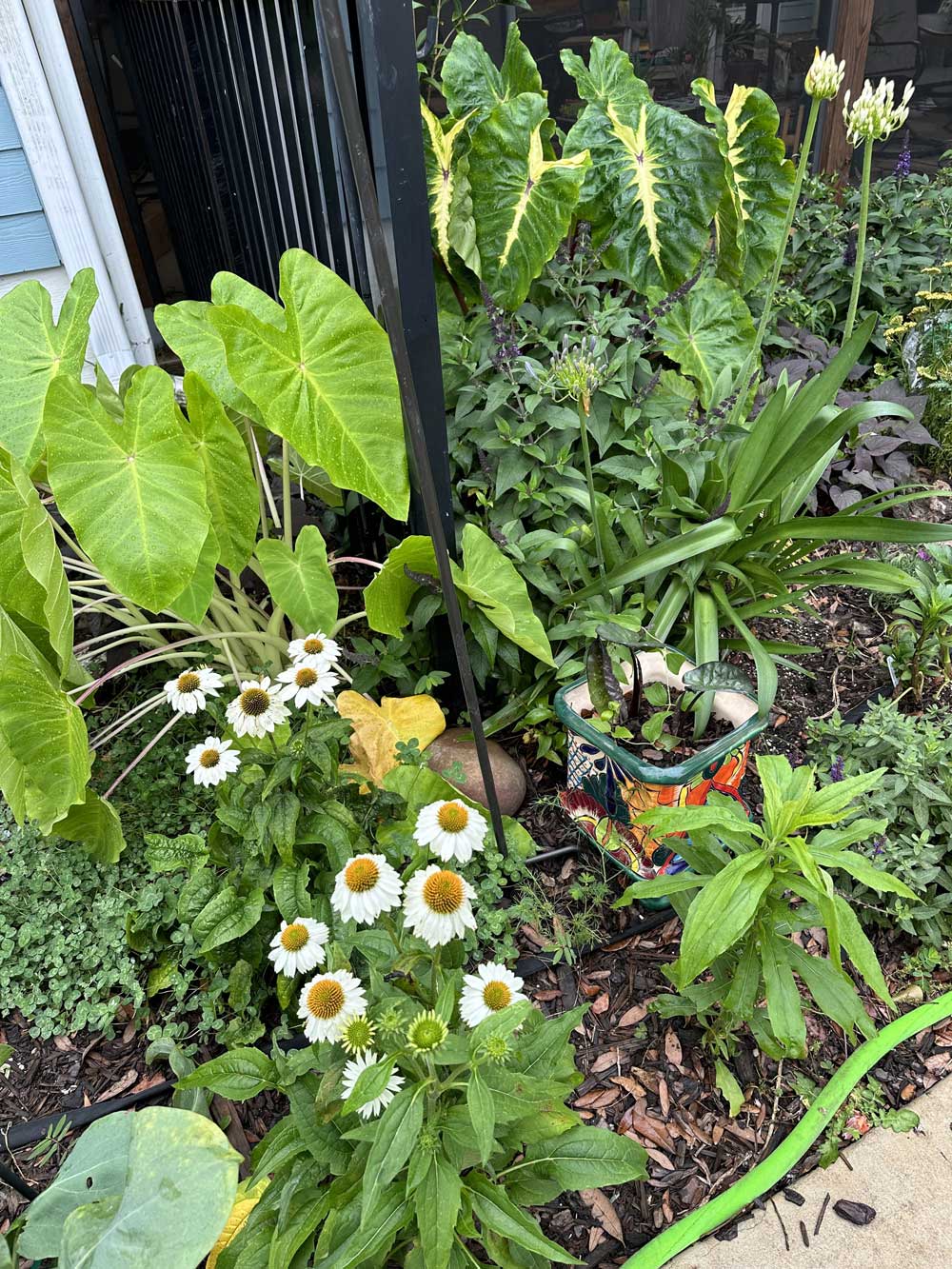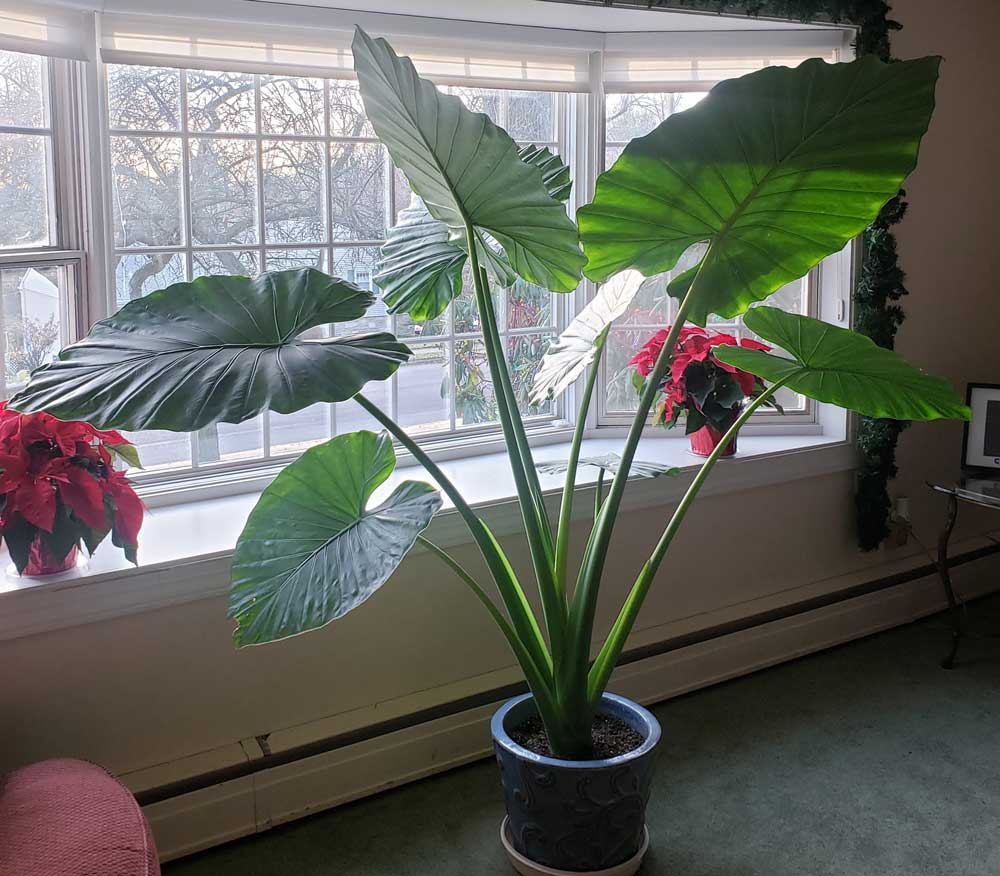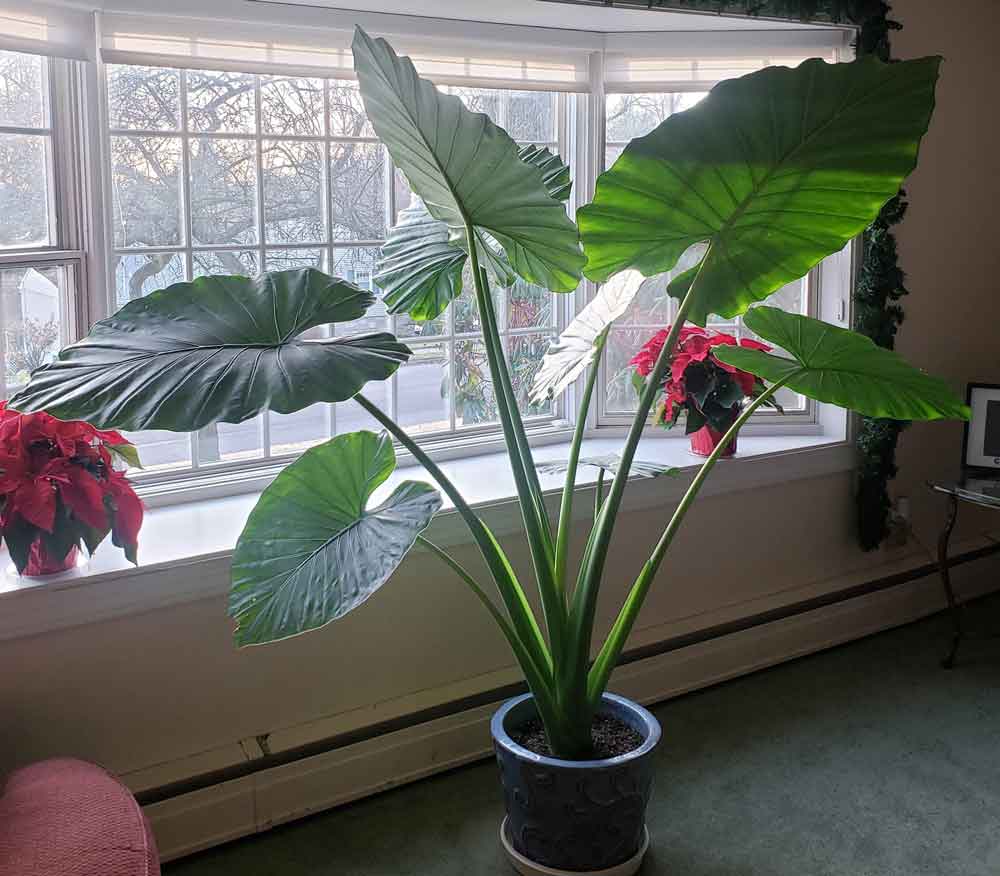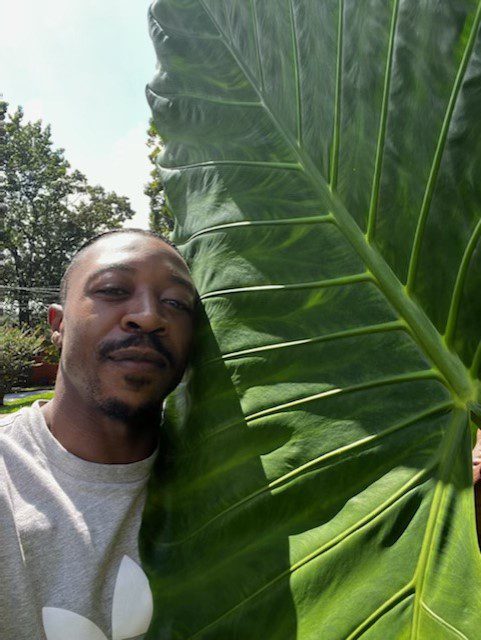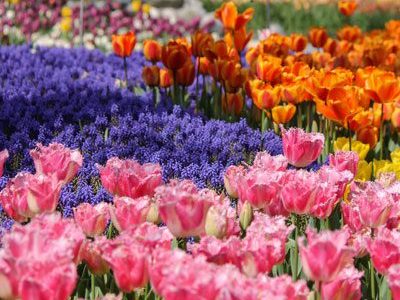About Elephant Ears
Large and impressive, Colocasia, or elephant ears, are tropical plants that can grow mammoth sized leaves! This dramatic and exciting specimen is actually considered a swamp plant that thrives with its roots under water. Because of this, elephant ears make staggeringly large installations by water features. Hardy in zones 8 through 11, cooler zones treat this bulb as an annual wherein the bulbs are dug up and stored in the winter to be planted again in the spring.
When to Plant Elephant Ear Bulbs
Plant elephant ears when the soil warms up in the spring and after any danger of frost has passed. Elephant ear tubers will not grow until the soil is warm, so plant once the soil temperature is 65ºF.
Where to Plant Elephant Ear Bulbs
Make sure to give your elephant ears plenty of room. An adult elephant ear plant will need at least three feet of space for proper growth. Select a partially shaded location, or an area with filtered sun. If planted in a hot, sunny location, make sure the bulbs are somehow shaded from the afternoon sun. Plant tubers in rich, well-draining soil. You can improve your soil by adding loamy topsoil or compost. These plants are usually found growing in swamps with the root structure under water. Choose your location where your elephant ears will receive plenty of water.
How to Plant Elephant Ear Bulbs
Once you have selected a spot, dig a hole about three to four times the size of the tuber. Refill the hole as necessary with loose soil enough so that the tuber will be about one to two inches below ground level when planted. Set the tuber in the planting hole, pointed side up, and cover tuber with soil. Water the area deeply. After watering, about one to two inches of soil should cover the tuber. It’s good to mark the spot where the tuber is planted, as it will take a few weeks for the plant to emerge from the soil. Use a stake or other marker so you won’t forget where you planted the elephant ear. Understand that it can take two to eight weeks before the first signs of sprouting. The amount of time it takes for the first growth to show will depend on soil temperature.
Colocasia can also be grown in large containers. Follow the directions above, and as freezing temperatures near, dig up and store bulbs in a cool, dry place to replant the following spring.
How to Care for Elephant Ears
Water frequently! Elephant ears need consistent moisture throughout the summer and should not be left to go dry. Droopy leaves will give early enough warning for the plant to recover if watered within a day. They can also benefit from an application of liquid fertilizer every two to three weeks. Trim away any faded or brown leaves to encourage new growth. Store tubers in a cool, dry place such as a basement or location that does not drop below freezing. Do not store them in plastic bags. Instead, store the bulbs in either a plain paper bag with plenty of holes for ventilation, or an open crate with peat moss or garden vermiculite. Once spring arrives, replant the tubers when it starts to warm up. Separate the tubers as needed.


